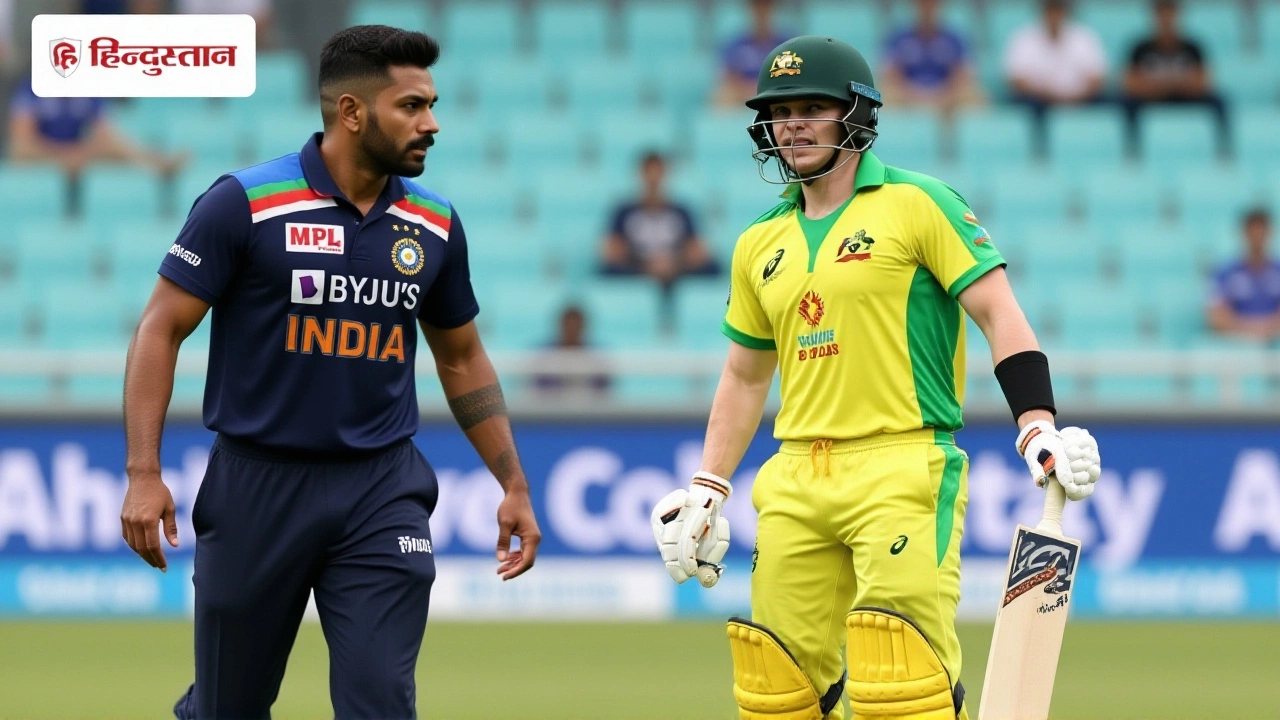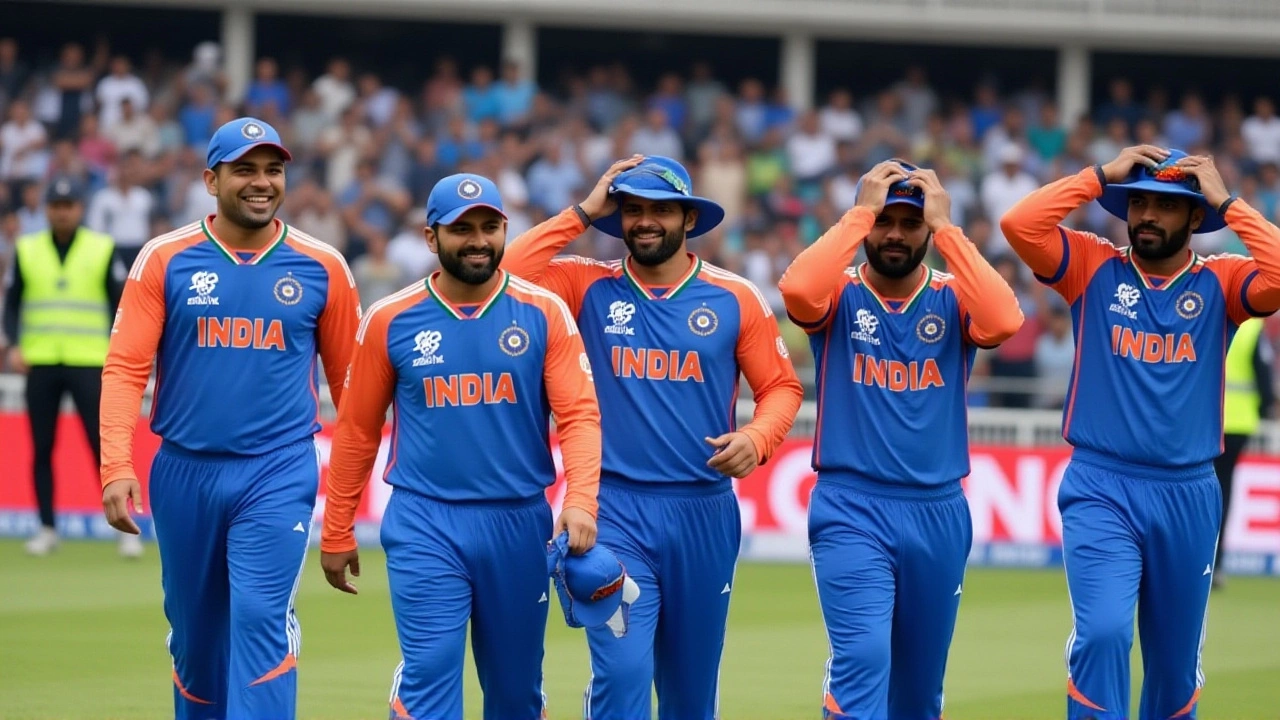When Shubman Gill, captain of the India national cricket team won the toss on the bright Sunday morning of October 19, 2025, he chose to let Australia bat first, a decision that set the tone for a tightly contested opening ODI.
The match unfolded at a historic Australian venue – Melbourne – marking the first clash of the India Tour of Australia 2025 ODI SeriesMelbourne. Both sides arrived fresh: the Indian camp landed in Sydney on October 15 and made its way to Melbourne for three days of practice, while the Australians, led by stand‑in skipper Mitchell Marsh, had been training at the ground since October 16.
Why the Toss Decision Mattered
Gill’s rationale was simple – “We would have bowled first as well. It’s all about getting mentally ready.” He wanted his bowlers to exploit the early‑morning moisture Marsh himself mentioned, hoping the seamers could swing the ball before the pitch settled. Marsh, on the other hand, expressed confidence in his attack, noting, “We’re going to bowl first. Looks like a good wicket, a little moisture – perfect for swing.” The binary choice highlighted each captain’s strategic focus: India’s emphasis on mental preparation and Australia’s belief in their seasoned pace quartet.
Line‑ups and the Debutant Surprise
India’s XI featured a blend of experience and youth. Apart from the ever‑reliable Rohit Sharma opening the batting, the side fielded debutant Nitish Kumar Reddy, a 22‑year‑old all‑rounder from Andhra Pradesh who earned his spot after a standout Vijay Hazare Trophy season. The pace attack comprised Harshit Rana, Mohammed Siraj and Arshdeep Singh, giving Gill three genuine quicks.
Australia countered with a line‑up heavy on batting depth. Opener Travis Head teamed up with Marsh, while the pace brigade featured veterans Mitchell Starc, Josh Hazlewood and Nathan Ellis. The inclusion of newcomer Cooper Connolly added extra all‑round firepower.
Early Drama: Rohit’s Low Catch
Within the first 12 overs, the Australian top order stumbled. A lofted delivery from Siraj skidded off the seam, prompting a rash hook from the middle‑order. Rohit, perched at mid‑wicket, swooped in for a textbook low catch that dismissed the Australian batsman’s identity still unconfirmed. The dismissal was a morale boost for the Indian side and underscored Rohit’s reputation as a reliable fielder. “That’s the kind of effort we need,” Gill murmured to the dressing room, his tone a mix of relief and focus.
Key Stats So Far
- India’s bowlers have bowled 27 overs, picking up two wickets for 112 runs.
- Australia’s first‑innings score sits at 138/5 after 30 overs.
- Rohit Sharma has taken one catch and scored 22 runs off 18 balls.
- New debutant Nitish Kumar Reddy contributed 12 runs and bowled two economical overs.
- The partnership between Head and Marsh added 48 runs for the third wicket.
Reactions from the Stands and Pundits
Commentators highlighted the strategic win in the toss. Former Australian pacer Glenn McGrath said, “Choosing to bowl first was smart. Early swing can change games, especially with a fresh pitch.” On the Indian side, veteran analyst Harsha Bhogle noted, “Gill’s decision reflects a modern captain’s mindset – prioritize conditions over ego.” Fans in the stadium chanted “India! India!” in unison, a reminder of how deeply the rivalry runs.

What This Means for the Super League
The ODI is part of the ICC Men’s Cricket World Cup Super League, where every win nudges a team closer to direct qualification for the 2027 World Cup. A win for India would give them a crucial three points, while Australia looks to defend its home advantage. Both coaches emphasized that the series will serve as a litmus test for squad depth ahead of the upcoming summer fixtures against England and South Africa.
Looking Ahead: Second and Third ODIs
Schedules have been set: the second ODI is slated for October 22 at the Sydney Cricket Ground, and the finale on October 25 will be played at the Adelaide Oval. Injuries are minimal, but Australia’s fast bowler Pat Cummins remains sidelined, keeping Mitchell Starc in the captain’s rotation. India, meanwhile, may consider rotating a middle‑order batsman if the top order continues to dominate.
Why This Match Caught Everyone’s Eye
Beyond the numbers, the narrative is compelling. It’s the first meeting after the 2023 World Cup final, where India fell short. The podium now belongs to a captain who is only 25, and a veteran like Rohit still pulling off match‑changing fielding moments. The clash also showcases the evolving role of young all‑rounders like Nitish Kumar Reddy, who could become a mainstay in India’s limited‑overs plans.
Frequently Asked Questions
How does the result of this ODI affect India's World Cup qualification chances?
A win adds three points to India's tally in the ICC Super League, tightening the race for automatic qualification. Even a loss keeps them within striking distance, but they'll need strong performances in the remaining two matches to stay ahead of borderline teams like New Zealand and Pakistan.
Who are the standout players to watch in the remaining games?
For India, the emerging all‑rounder Nitish Kumar Reddy and the pace trio of Siraj, Rana and Singh are key. Australia will rely heavily on the experience of Mitchell Starc and the consistency of Josh Hazlewood, while Travis Head’s form remains crucial.
What was the significance of Rohit Sharma’s catch?
Beyond the wicket, the low catch demonstrated India's fielding intensity early in the series. It sparked momentum, lifted the team's morale, and reminded the opposition that every run could be contested, a factor that often decides close ODI battles.
Why did Mitchell Marsh decide to bowl first despite being the home side?
Marsh cited early‑morning moisture on the pitch, which typically favors seam swing. Bowling first also gives Australia the chance to chase a target, a strategy that aligns with their strong middle‑order batting depth.
When and where will the next two ODIs be played?
The second match is scheduled for October 22 at the Sydney Cricket Ground, while the series decider will take place on October 25 at the Adelaide Oval. Both venues promise different pitch characteristics, adding another tactical layer for the coaches.


